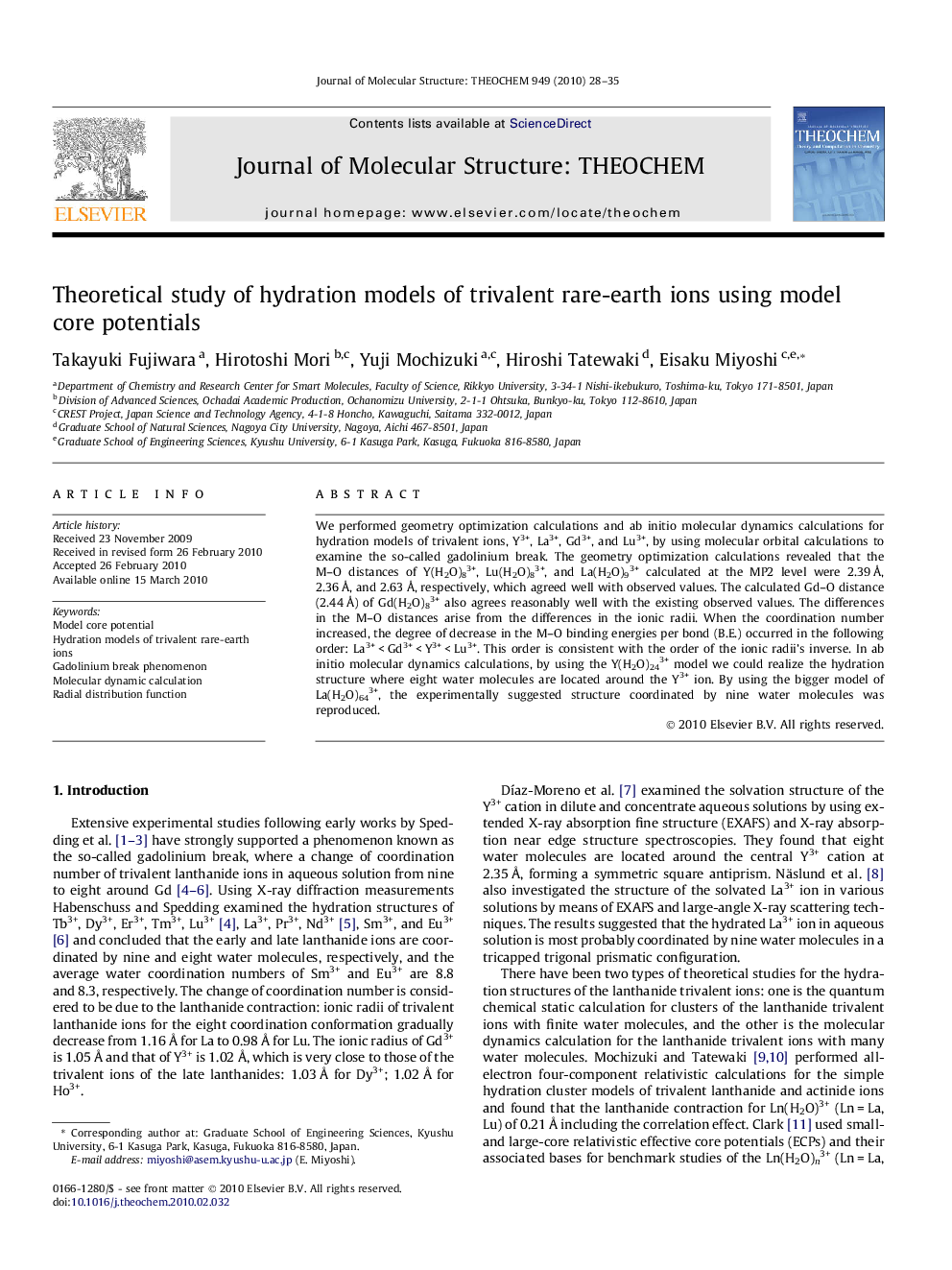| Article ID | Journal | Published Year | Pages | File Type |
|---|---|---|---|---|
| 5416708 | Journal of Molecular Structure: THEOCHEM | 2010 | 8 Pages |
Abstract
We performed geometry optimization calculations and ab initio molecular dynamics calculations for hydration models of trivalent ions, Y3+, La3+, Gd3+, and Lu3+, by using molecular orbital calculations to examine the so-called gadolinium break. The geometry optimization calculations revealed that the M-O distances of Y(H2O)83+, Lu(H2O)83+, and La(H2O)93+ calculated at the MP2 level were 2.39Â Ã
, 2.36Â Ã
, and 2.63Â Ã
, respectively, which agreed well with observed values. The calculated Gd-O distance (2.44Â Ã
) of Gd(H2O)83+ also agrees reasonably well with the existing observed values. The differences in the M-O distances arise from the differences in the ionic radii. When the coordination number increased, the degree of decrease in the M-O binding energies per bond (B.E.) occurred in the following order: La3+Â <Â Gd3+Â <Â Y3+Â <Â Lu3+. This order is consistent with the order of the ionic radii's inverse. In ab initio molecular dynamics calculations, by using the Y(H2O)243+ model we could realize the hydration structure where eight water molecules are located around the Y3+ ion. By using the bigger model of La(H2O)643+, the experimentally suggested structure coordinated by nine water molecules was reproduced.
Keywords
Related Topics
Physical Sciences and Engineering
Chemistry
Physical and Theoretical Chemistry
Authors
Takayuki Fujiwara, Hirotoshi Mori, Yuji Mochizuki, Hiroshi Tatewaki, Eisaku Miyoshi,
